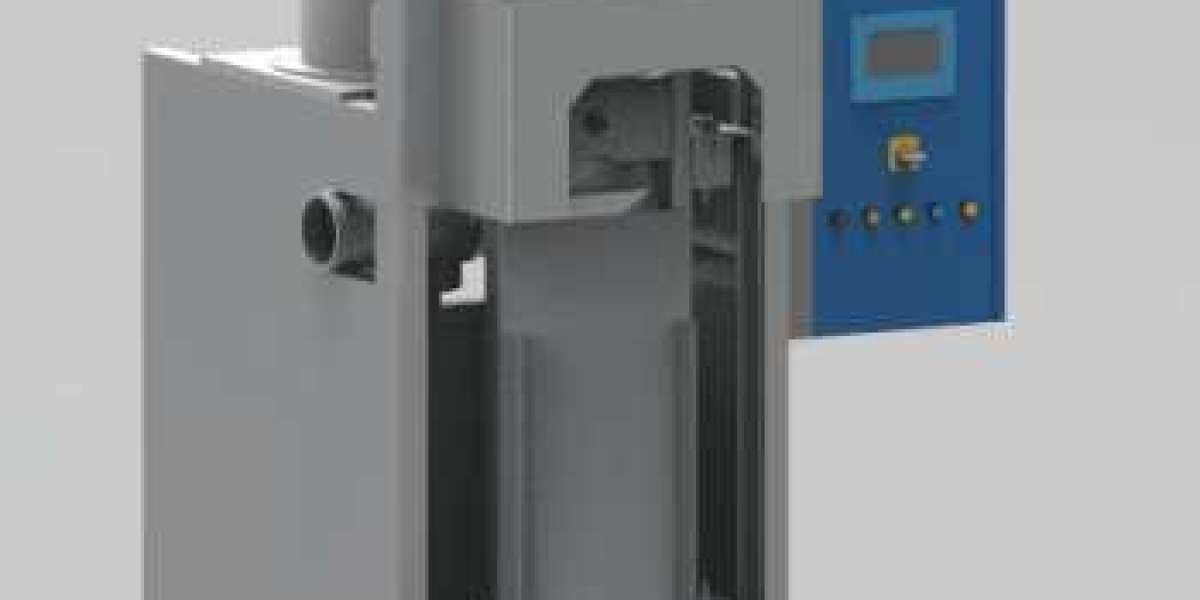Handling bulk materials efficiently is a challenge many industries face. Whether you're in agriculture, food processing, construction, or manufacturing, filling large bags manually can be time-consuming, inconsistent, and costly. That’s where a Bulk Bag Filling Machine comes in. But how exactly does it improve operations, and why should businesses invest in one? Let’s explore the benefits and functionality of this essential equipment.
What Is a Bulk Bag Filling Machine?
A Bulk Bag Filling Machine is an industrial solution designed to automate the process of filling large bulk bags, often called FIBCs (Flexible Intermediate Bulk Containers) or super sacks. This machine ensures materials are accurately weighed, efficiently filled, and securely sealed, improving productivity and reducing material waste.
Businesses that deal with powders, granules, and other bulk products benefit significantly from these machines. Instead of relying on manual labor, which can lead to inconsistencies and inefficiencies, a Bulk Bag Filling Machine provides a faster and more accurate way to package and transport bulk materials.
How Does a Bulk Bag Filling Machine Work?
The machine follows a systematic process to ensure efficient and precise filling. Here’s how it typically works:
- Bag Placement – An empty bulk bag is placed beneath the filling station and secured using clamps or bag loop hooks. Some machines have an automatic inflation system to hold the bag open.
- Material Dispensing – The product flows into the bag through a controlled system, which may use gravity, an auger, a conveyor, or a pneumatic system, depending on the material type.
- Weighing & Measuring – Advanced weighing sensors monitor the amount of material being dispensed, ensuring accuracy and compliance with weight regulations.
- Vibration & Compaction – Some machines include a vibration mechanism to settle and compact the material, maximizing the bag's capacity and improving stability during transportation.
- Sealing & Removal – Once the bag reaches the target weight, it is securely sealed and either removed manually or transported via a conveyor system.
This automation speeds up the process, reduces human error, and minimizes material loss.
Key Benefits of Using a Bulk Bag Filling Machine
A Bulk Bag Filling Machine offers numerous advantages that can transform the way businesses handle bulk materials.
1. Increased Efficiency and Productivity
Manual filling is slow and labor-intensive. With automation, businesses can fill more bags in less time, increasing overall production capacity without additional workforce costs.
2. Accurate and Consistent Filling
Overfilled bags result in wasted product, while underfilled ones may not meet weight requirements. A Bulk Bag Filling Machine ensures precise weight measurements, improving consistency and reducing material loss.
3. Reduced Labor Costs
By automating the filling process, businesses can cut down on manual labor requirements. This not only reduces payroll expenses but also decreases the risk of workplace injuries associated with lifting heavy materials.
4. Improved Workplace Safety
Lifting and handling heavy bulk bags manually can lead to worker fatigue and injuries. These machines eliminate the need for excessive physical labor, creating a safer working environment.
5. Minimized Material Waste
A controlled filling system prevents spillage and product loss, helping businesses save money and reduce environmental impact. The machine ensures every bag is filled optimally without unnecessary waste.
6. Consistent Packaging Quality
Uniformly filled bags improve storage and transportation efficiency. When bags are filled inconsistently, they can be unstable, making stacking and shipping more difficult. A Bulk Bag Filling Machine ensures uniformity, making logistics smoother.
Industries That Benefit from a Bulk Bag Filling Machine
Many industries rely on Bulk Bag Filling Machines to streamline their operations. Here are some sectors that benefit the most:
- Agriculture – Filling bags with grains, seeds, animal feed, and fertilizers.
- Food Processing – Packaging flour, sugar, coffee beans, and other food ingredients.
- Construction & Mining – Handling materials like sand, cement, gravel, and minerals.
- Chemical Manufacturing – Filling bags with powders, industrial chemicals, and resins.
- Plastics & Recycling – Packaging plastic pellets and recyclable materials.
If your business deals with bulk materials regularly, investing in a Bulk Bag Filling Machine can enhance efficiency and profitability.
How to Choose the Right Bulk Bag Filling Machine
Selecting the right machine depends on several factors. Here’s what to consider before making a purchase:
- Material Type – Different machines are designed for powders, granules, or mixed materials. Ensure the machine suits your specific product.
- Bag Size and Weight Capacity – Choose a model that accommodates the size and weight of the bulk bags you use.
- Automation Level – Fully automated machines offer maximum efficiency, while semi-automatic models are suitable for businesses with lower production volumes.
- Integration with Other Systems – If your business requires additional features like dust control or palletizing, ensure the machine is compatible with existing systems.
- Budget & ROI – Consider the long-term cost savings in labor and material waste to justify the investment.
Maintenance Tips for Long-Term Performance
To keep your Bulk Bag Filling Machine operating efficiently, regular maintenance is essential. Follow these tips to ensure longevity:
- Keep the Machine Clean – Dust and residue buildup can affect performance. Clean the filling station regularly.
- Inspect Components – Check moving parts, weighing sensors, and conveyor systems for wear and tear.
- Lubricate Moving Parts – Reduce friction by keeping mechanical components well-lubricated.
- Calibrate the Weighing System – Regular calibration ensures continued accuracy in weight measurement.
- Monitor Software and Controls – If your machine has digital controls, keep the software updated for optimal functionality.
Proper maintenance helps prevent unexpected breakdowns and costly repairs, ensuring the machine delivers long-term value.
Is a Bulk Bag Filling Machine Worth the Investment?
For businesses that handle large quantities of bulk materials, a Bulk Bag Filling Machine is a game-changer. While the initial investment may seem significant, the long-term benefits far outweigh the costs.
- Faster production means meeting higher demand with ease.
- Reduced labor costs free up resources for other operational improvements.
- Minimized material waste leads to cost savings and environmental benefits.
- Improved safety protects workers from injuries and reduces compensation claims.
Many companies experience a quick return on investment through increased productivity and efficiency.
Final Thoughts
A Bulk Bag Filling Machine is more than just a convenience—it’s a necessity for businesses looking to improve efficiency, accuracy, and workplace safety. Whether you work in agriculture, food production, construction, or manufacturing, upgrading to an automated filling system can take your operations to the next level.
If you’re still relying on manual methods, now is the time to consider making the switch. Investing in a Bulk Bag Filling Machine can boost your business's performance, reduce operational costs, and enhance product consistency. It’s a smart move for any company looking to streamline bulk material handling.







